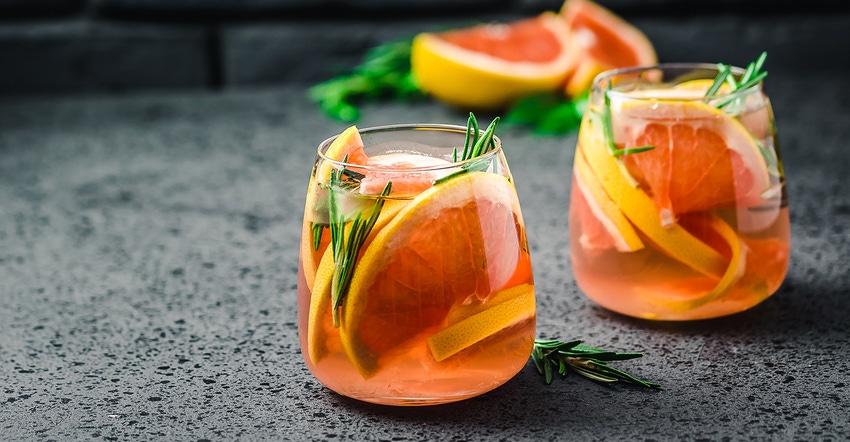Mocktails and sustainability drive innovation in beverage market
Consumers still want the taste of cocktails, but with less alcohol, and they want all their drinks to benefit their health and the environment.

Low and no-alcohol beverages take the spotlight with the rise led by Millennials, but other generations are following suit. “Session” is a term used for low-alcohol drinks and mocktails aimed at more moderate adult demographic. They will reach into 2020 because they are the perfect hybrid as they maintain their adult status and appeal while not betraying overlapping health trends. They are easy to replicate at home and can make appearances in retail, as seen with some of the new sparkling spiked water launches. Their greatest strength lies in the fact that they are a near-perfect Pandora’s Box—an unstoppable trend with no adversaries or competitors. The players getting the most press include switchels, drinking vinegars, kefir, hard sodas, spiked waters, hard ciders and any classic cocktails that are complex enough to endure when alcohol is removed, such as the Tiki crowd.
The International Wines and Spirits Record (IWSR) predicted low- and no-alcohol products in the U.S. will grow 32.1 percent between 2018 and 2022, as U.S. alcohol volumes dropped 0.8 percent last year, and 52 percent of adults who drink alcohol are either trying now or have tried before to reduce their alcohol intake.
Another Pandora’s Box, sustainability is a virtually unstoppable trend having no adversaries and little or no competition. The only way to fail at this trend is to not engage. Nielsen reported U.S. organic sales surpassed $21 billion in 52 weeks ending Nov. 24, 2018, up nearly 9 percent from the previous 52 weeks. Earthbound Farm found 40 percent of shoppers expected to increase the amount of organic they buy in 2019. Nielsen reported that 48 percent of U.S. consumers say they would change their consumption habits to reduce their impact on the environment. Meanwhile, Cargill Inc. reported that more than 50 percent of Gen Y participants changed their eating habits for sustainability reasons in the past year versus 19 percent of older U.S. respondents. It is best for brands to place wide nets and engage several sustainability trends within a product. Brands should market how a sustainability feature benefits the consumer, not their company.
Learn more beverage trends in this full article, which appears in INSIDER’s Beverages Digital Magazine.
Suzy Badaracco is the president of Culinary Tides Inc. and holds a bachelor’s degree in criminalistics, associate degree in culinary arts, and master’s degree in human nutrition. Badaracco has been trained in military intelligence, chaos theory and predictive analysis techniques, and has been practicing trends intelligence and predictive forecasting for more than 15 years. Using these techniques, she has been able to successfully predict and profile government, technology, adversary and ally, food, flavor, consumer, industry, and health trends. Culinary Tides Inc. helps food industry partners navigate trends by revealing relevant patterns, so they can create products that connect with customers. They specialize in foretelling a trend’s birth and forecasting its trajectory, personality and longevity. The forecast results are used to create entrance, navigation and exit strategies.
About the Author(s)
You May Also Like






.png?width=800&auto=webp&quality=80&disable=upscale)